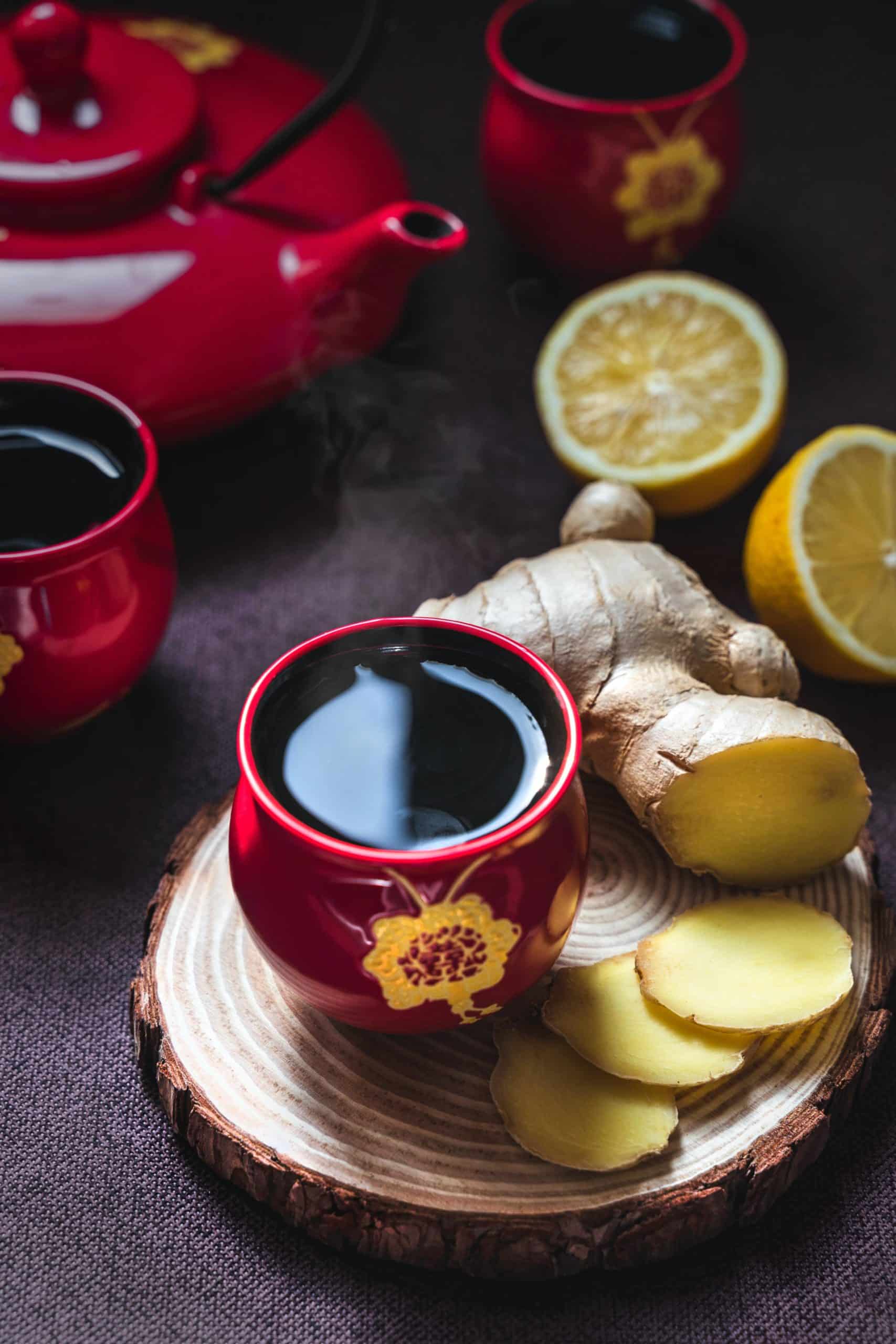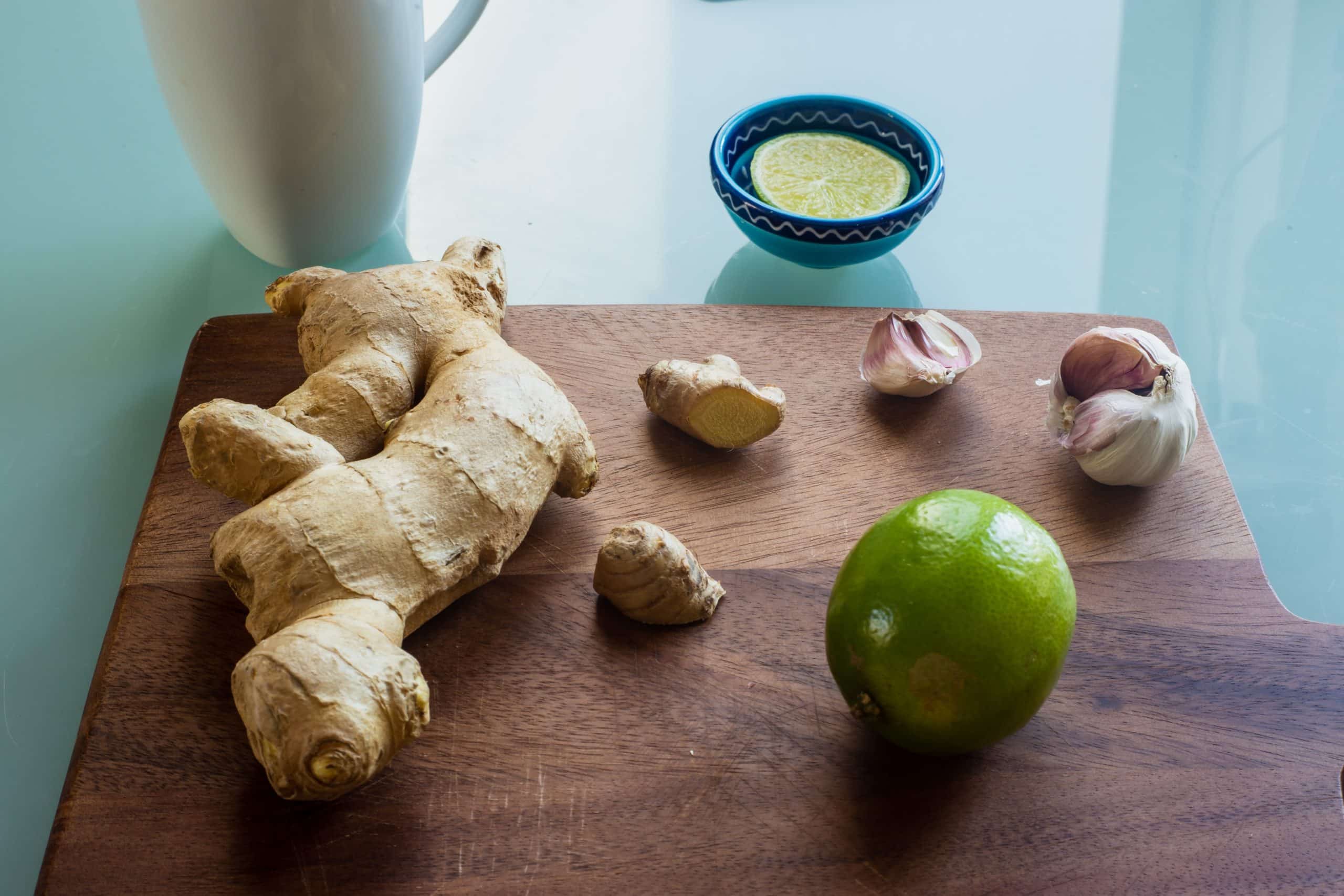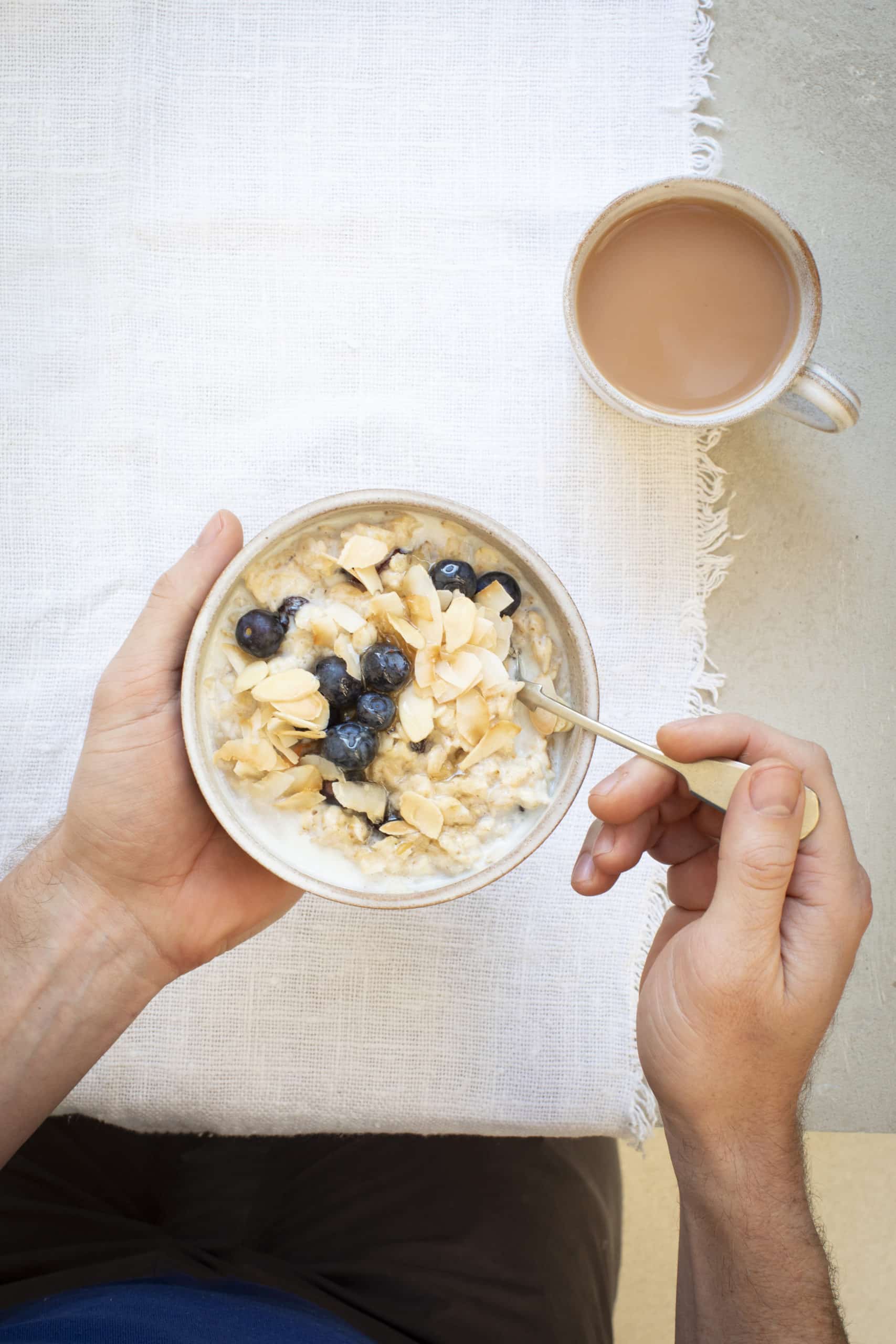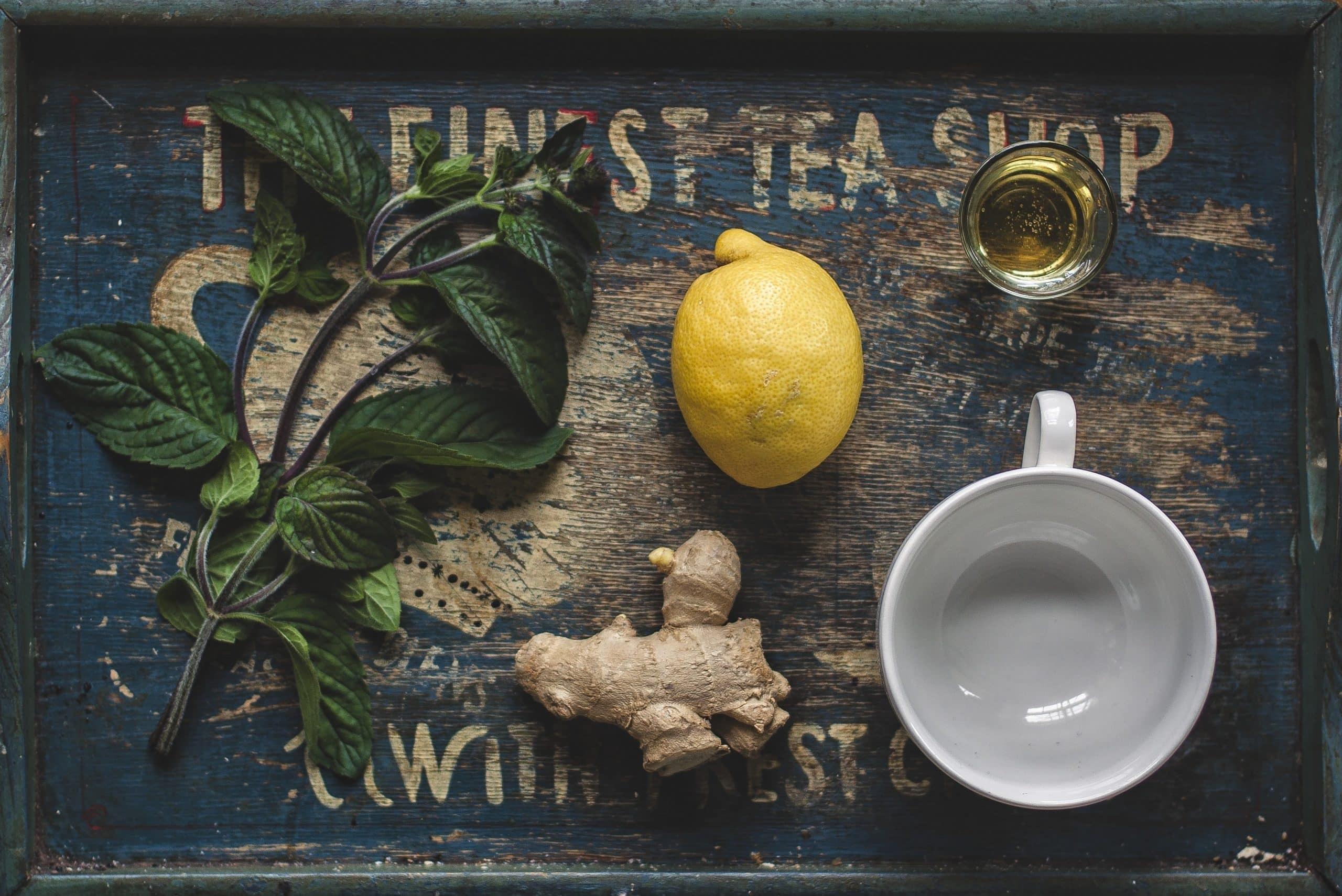Eating ginger-ly
The ancient Romans first imported ginger from China over two thousand years ago. On introduction, ginger first became hugely popular in the Mediterranean countries before spreading elsewhere in Europe. In Ireland, we are probably more accustomed to thinking about ginger ale or ginger nut biscuits (!), but in Asian countries, ginger is best known as a spice or flavouring agent. If you don’t already use ginger in your dishes, the fresh form of ginger is an odd-shaped brown root found in the vegetable section of supermarkets. Ginger comes in many different forms but for simplicity I am going to discuss fresh root ginger rather than other forms such as the crystalized, powdered or pickled form. Due to its robust nature and ability to keep, fresh ginger can be found all year round, so there are no issues with availability or seasonality.
 Ginger has been widely used in traditional Eastern medicine for its aromatic properties or as a spice in many cultures throughout the world, particularly in Africa, Australasia and the Caribbean where it is traditionally grown. For centuries, ginger root has been used as a remedy for various ailments such as colds and upset stomachs. In more recent times, it has been used for reducing pain after injury, and by athletes after intense exercise to reduce muscle soreness. One of the great things about ginger is that not only does if confer a variety of health benefits, but it tastes delicious too and can be used in many ways to add flavour to meals and snacks.
Ginger has been widely used in traditional Eastern medicine for its aromatic properties or as a spice in many cultures throughout the world, particularly in Africa, Australasia and the Caribbean where it is traditionally grown. For centuries, ginger root has been used as a remedy for various ailments such as colds and upset stomachs. In more recent times, it has been used for reducing pain after injury, and by athletes after intense exercise to reduce muscle soreness. One of the great things about ginger is that not only does if confer a variety of health benefits, but it tastes delicious too and can be used in many ways to add flavour to meals and snacks.
The nutritional value of ginger
Although ginger is called a root, it is actually classified as an underground stem called a ‘rhizome’. The flesh is normally a pale yellow colour, but it can vary from green to dark red depending on the variety and age. Ginger contains a small amount of carbohydrate and protein as well as being rich in micronutrients such as calcium, phosphorus, iron, vitamin C, choline, folate, inositol, manganese, panthotenic acid, silicon, and a small amount of vitamin B3 (niacin). Ginger also contains an abundance of phytochemicals (‘phyto’ is Greek for plant) that are suggested to be the primary ingredients that bestows it’s health benefits. One such class of chemicals are gingerols, naturally-occurring oils in ginger that, while providing some of the taste and smell associated with ginger, also have quite potent anti-inflammatory properties.
 The benefits of ginger
The benefits of ginger
The most commonly suggested benefits of ginger are reduced symptoms of osteoarthritis, rheumatoid arthritis, muscle soreness and nausea. Although a quick internet search will suggest there are many more, these seem to be the most credible health claims at present. It is not fully established as to how ginger offers these benefits, but some of the suggested mechanisms are that ginger possesses numerous therapeutic properties including antioxidant effects, an ability to inhibit the formation of inflammatory molecules, and direct anti-inflammatory effects through the aforementioned gingerols.
 Ginger appears to disrupt the pathways that produce the chemical messengers (known as COX and LOX) that lead to inflammation and the sensation of pain. An interesting study assessed the impact of taking 2 grams of ginger as a daily oral supplement, and found this reduced exercise-related muscle pain by as much as 25%. A notable caveat is that the participants consumed the ginger over 11 days as a supplement to prevent pain rather than as an acute pain reliever. Although research is limited, ginger has been shown to be an effective pain management alternative to anti-inflammatory medications like ibuprofen or aspirin. For long-term pain suffers, it would certainly be no harm to experiment with including it in the diet and assessing any effect for any pain relief or reduction in inflammation that it may offer.
Ginger appears to disrupt the pathways that produce the chemical messengers (known as COX and LOX) that lead to inflammation and the sensation of pain. An interesting study assessed the impact of taking 2 grams of ginger as a daily oral supplement, and found this reduced exercise-related muscle pain by as much as 25%. A notable caveat is that the participants consumed the ginger over 11 days as a supplement to prevent pain rather than as an acute pain reliever. Although research is limited, ginger has been shown to be an effective pain management alternative to anti-inflammatory medications like ibuprofen or aspirin. For long-term pain suffers, it would certainly be no harm to experiment with including it in the diet and assessing any effect for any pain relief or reduction in inflammation that it may offer.
Making the best use of fresh ginger
Ginger produces a hot, fragrant spice. Young ginger rhizomes are mild in flavour and have a juicy flesh. There are multiple ways that ginger can be used, but the way to gain the greatest benefits from fresh ginger is to slice, grate or chop it into dishes. For example adding ginger to stir-frys, chicken dishes, juices, smoothies, and teas is particularly tasty. The smoothie option is a personal favourite as it’s quick, simple and tasty. In relation to total daily intake, there are no daily recommended guidelines, but based on the study mentioned above, between 2-4 g of raw ginger daily should be sufficient to provide the potential anti-inflammatory and antioxidant benefits.
 Fresh ginger root is best. Not only is fresh ginger more flavoursome, it also contains higher levels of antioxidants and the beneficial compound that I referred to earlier (gingerols). When purchasing fresh ginger root, make sure it is firm, smooth and free of mold. Fresh ginger is available in two forms, either young or mature. Mature ginger has a tougher skin and requires peeling, but it tends to be more widely available. Young ginger is a bit harder to find and is usually only available in fresh food markets, but is very tasty and worth seeking out if you have the chance to do so. If it is left unpeeled, fresh ginger can be stored in the refrigerator for as long as three weeks.
Fresh ginger root is best. Not only is fresh ginger more flavoursome, it also contains higher levels of antioxidants and the beneficial compound that I referred to earlier (gingerols). When purchasing fresh ginger root, make sure it is firm, smooth and free of mold. Fresh ginger is available in two forms, either young or mature. Mature ginger has a tougher skin and requires peeling, but it tends to be more widely available. Young ginger is a bit harder to find and is usually only available in fresh food markets, but is very tasty and worth seeking out if you have the chance to do so. If it is left unpeeled, fresh ginger can be stored in the refrigerator for as long as three weeks.
In summary, consuming fresh ginger may help with nausea, reducing muscle soreness and potentially reducing the symptoms of inflammatory conditions like osteoarthritis. Potential health benefits aside, ginger is an excellent food to add flavour and spice to various dishes and beverages. It’s a regular ingredient in my recipes. So, whether it’s a spicy chicken, a fresh fruit smoothie or a hot tea you are having, I suggest you get creative and try adding a little ginger!
.








